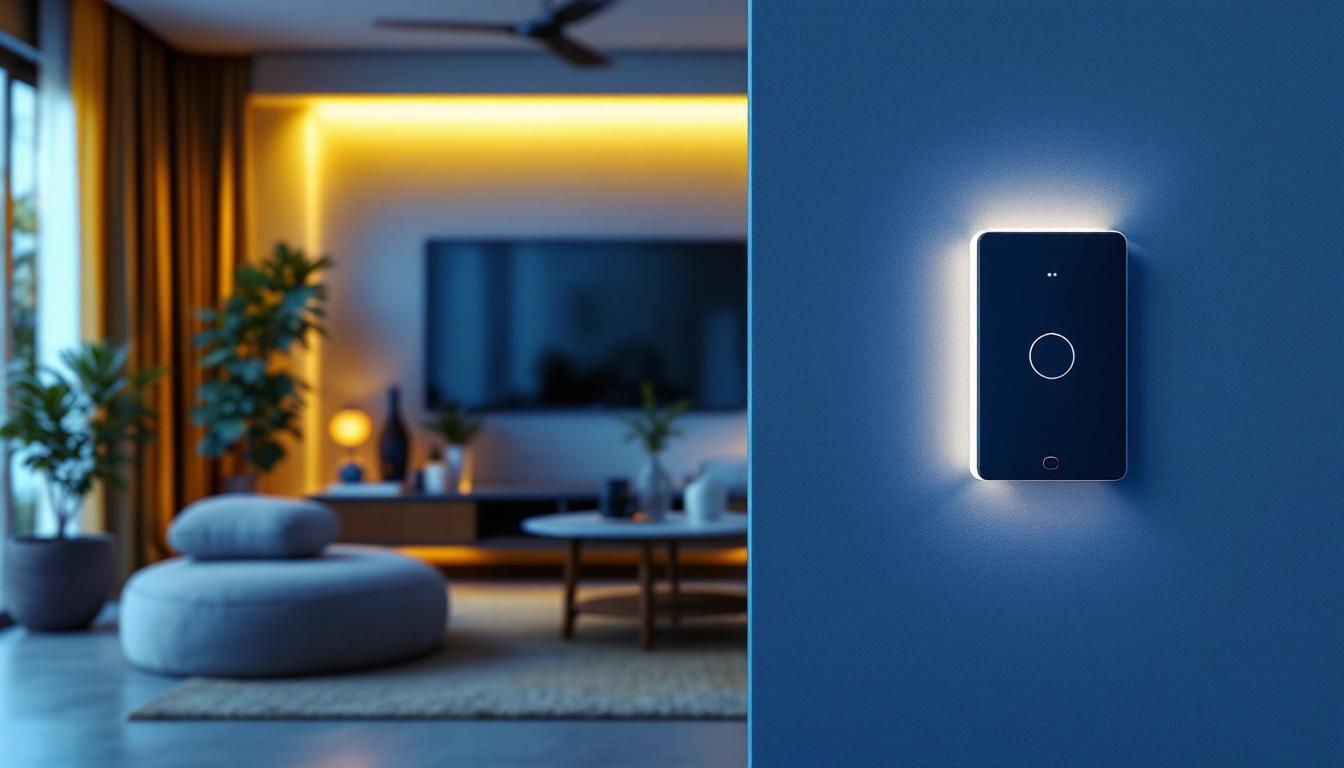
The lighting industry has seen remarkable advancements over the years, but few innovations have had as profound an impact as the introduction of room ceiling lights. These fixtures are not just functional; they are transforming the way spaces are illuminated and experienced. This article explores the significance of room ceiling lights and why they are considered a game-changer for the lighting industry.
Room ceiling lights are fixtures designed to provide general illumination in various spaces, from residential homes to commercial establishments. Unlike traditional lighting options, these fixtures are typically mounted directly to the ceiling, offering a clean and unobtrusive look that enhances the overall aesthetic of a room.
These lights come in various styles, sizes, and technologies, including LED, fluorescent, and incandescent options. The versatility of room ceiling lights allows them to fit seamlessly into any design scheme, making them a popular choice among contractors and designers alike. With the rise of smart home technology, many modern ceiling lights can now be integrated with home automation systems, allowing users to control brightness and color temperature through mobile apps or voice commands, adding an extra layer of convenience and customization.
When it comes to room ceiling lights, the options are vast. Some of the most common types include flush mounts, semi-flush mounts, recessed lighting, and pendant lights. Each type serves a unique purpose and can dramatically alter the ambiance of a space.
Flush mount lights are ideal for low ceilings, providing a sleek look without sacrificing illumination. Semi-flush mounts offer a bit more style and are perfect for rooms with higher ceilings. Recessed lighting, on the other hand, is often used to create a modern, minimalist aesthetic, allowing for a more open feel in a room. Pendant lights can serve as both a functional light source and a decorative element, making them a favorite in dining areas and kitchens. Additionally, chandeliers, which often fall under the category of pendant lights, can add a touch of elegance and sophistication, making them suitable for formal settings such as entryways or dining rooms.
One of the most significant advantages of room ceiling lights, particularly those utilizing LED technology, is their energy efficiency. LED lights consume significantly less energy than traditional incandescent bulbs, leading to lower electricity bills and a reduced carbon footprint. This shift towards energy-efficient lighting is not just a trend; it reflects a growing awareness of sustainability within the industry.
Moreover, many room ceiling lights are designed to last longer than their traditional counterparts, reducing the need for frequent replacements. This longevity not only benefits consumers but also contributes to less waste in landfills, aligning with broader environmental goals. In addition to energy savings, some manufacturers are now focusing on using recyclable materials in their products, further promoting sustainability. As consumers become more environmentally conscious, the demand for eco-friendly lighting solutions continues to rise, encouraging innovation and advancements in lighting technology.
Room ceiling lights are more than just functional fixtures; they play a crucial role in the overall interior design of a space. The right lighting can enhance architectural features, highlight artwork, and create a specific mood or atmosphere. In fact, lighting design has become an art form in itself, with many designers considering it as vital as the choice of furniture or color palettes. A well-lit room can transform a mundane space into a captivating environment, drawing the eye and inviting exploration.
Contractors and designers are increasingly recognizing the importance of lighting in their projects. A well-placed ceiling light can draw attention to a room’s focal point, while also providing the necessary illumination for everyday activities. This capability makes room ceiling lights an essential tool in the designer’s toolkit. Moreover, the variety of styles available—from sleek, modern fixtures to ornate chandeliers—allows for a seamless integration of lighting into the overall design aesthetic, ensuring that functionality does not come at the expense of style.
The ambiance of a room is heavily influenced by its lighting. Room ceiling lights can be adjusted to create different moods, whether it’s a warm, inviting glow for a cozy gathering or bright, focused light for tasks like cooking or reading. Many modern fixtures come with dimming capabilities, allowing users to tailor the brightness to their specific needs. This versatility is particularly valuable in multipurpose spaces, where the lighting requirements may change throughout the day or with the activity being performed.
Additionally, the color temperature of the light can also impact the ambiance. Warmer tones create a relaxed environment, while cooler tones can energize a space. Understanding these nuances is essential for contractors aiming to meet their clients’ needs and preferences. Furthermore, the use of layered lighting—combining ceiling lights with floor lamps, wall sconces, and accent lighting—can add depth and dimension to a room, making it feel more inviting and dynamic. This thoughtful approach to lighting design can significantly enhance the overall aesthetic and functionality of a space.
The rise of smart home technology has further elevated the role of room ceiling lights in modern design. Many ceiling lights can now be integrated with smart home systems, allowing users to control their lighting remotely or set schedules for when lights should turn on or off. This level of control not only enhances convenience but also allows for greater personalization, as users can create specific lighting scenes for different occasions, such as movie nights or dinner parties.
This integration not only enhances convenience but also offers opportunities for energy savings. By utilizing smart technology, homeowners can ensure that lights are only on when needed, further reducing energy consumption and costs. Additionally, some smart lighting systems can even adjust based on the time of day or the amount of natural light entering a room, ensuring optimal illumination at all times. As technology continues to evolve, the possibilities for creative and efficient lighting solutions are virtually limitless, making it an exciting time for both designers and homeowners alike.
While room ceiling lights offer numerous benefits, there are challenges and considerations that contractors should keep in mind when incorporating them into their projects. Understanding these factors can help ensure successful installations and satisfied clients.
Depending on the type of ceiling light chosen, installation can range from straightforward to complex. Flush mounts and semi-flush mounts are generally easier to install, while recessed lighting may require more extensive modifications to the ceiling structure.
Contractors must be prepared to assess the specific requirements of each project. This includes evaluating the existing electrical infrastructure and ensuring that the chosen fixtures comply with local building codes and safety regulations. Additionally, considerations such as ceiling height and room dimensions can impact the effectiveness of the lighting. For instance, in rooms with high ceilings, the choice of fixtures may necessitate the use of dimmers or multiple light sources to create a balanced ambiance, ensuring that the space feels inviting rather than overly bright or shadowy.
While room ceiling lights can offer long-term savings through energy efficiency, the initial cost can vary significantly based on the type and technology of the fixture. High-quality LED lights may have a higher upfront cost compared to traditional options, but their longevity and efficiency often justify the investment.
Contractors should provide clients with a clear understanding of the cost-benefit analysis, helping them make informed decisions that align with their budget and lighting needs. Furthermore, it is essential to discuss the potential for future maintenance costs, as some lighting solutions may require specialized care or replacement parts that can add to the overall expense. By outlining these factors, contractors can foster transparency and build trust with their clients, ensuring they feel confident in their choices and prepared for any financial implications that may arise during the lifespan of the lighting fixtures.
The lighting industry is continuously evolving, and room ceiling lights are at the forefront of this transformation. Several trends are emerging that are likely to shape the future of ceiling lighting.
As consumer preferences evolve, there is a growing demand for customizable lighting solutions. Manufacturers are responding by offering a wider range of styles, colors, and finishes for room ceiling lights. This trend allows homeowners to select fixtures that perfectly match their decor and personal style.
Moreover, customization extends beyond aesthetics. Smart lighting systems are becoming more sophisticated, allowing users to create personalized lighting scenes that can be adjusted based on time of day or activity.
Recent studies have highlighted the impact of lighting on health and well-being. As a result, there is a growing emphasis on circadian-friendly lighting solutions. Room ceiling lights that mimic natural daylight can help regulate sleep patterns and improve overall mood.
Contractors should be aware of these developments and consider incorporating circadian lighting principles into their designs. This approach not only enhances the functionality of a space but also promotes the well-being of its occupants.
Room ceiling lights are undeniably a game-changer for the lighting industry. Their versatility, energy efficiency, and aesthetic appeal make them a preferred choice for contractors and designers alike. As the industry continues to evolve, staying informed about the latest trends and technologies will be crucial for those looking to remain competitive.
By embracing the innovations brought forth by room ceiling lights, contractors can not only enhance their projects but also contribute to a more sustainable and aesthetically pleasing built environment. As the demand for quality lighting solutions grows, so too does the opportunity for those in the lighting industry to lead the way in creating spaces that are both functional and beautiful.
Ready to transform your lighting projects with the game-changing room ceiling lights discussed in this article? Look no further than LumenWholesale for an unparalleled selection of spec-grade lighting products. Our commitment to quality, affordability, and convenience ensures that you get the most value for your investment. With free shipping on bulk orders and no middleman markups, we provide the superior lighting solutions you need to create stunning, functional spaces. Elevate your lighting game today by visiting Wholesale Lighting at the Best Value and discover the LumenWholesale difference.

Discover why exit signs with emergency lights are essential for any successful lighting project.

Discover why LED troffers are a game-changer for lighting contractors.
Discover why electrical light switches are indispensable tools for every lighting contractor.

Discover the transformative power of LED dimmer switches with remote control in enhancing your lighting designs.